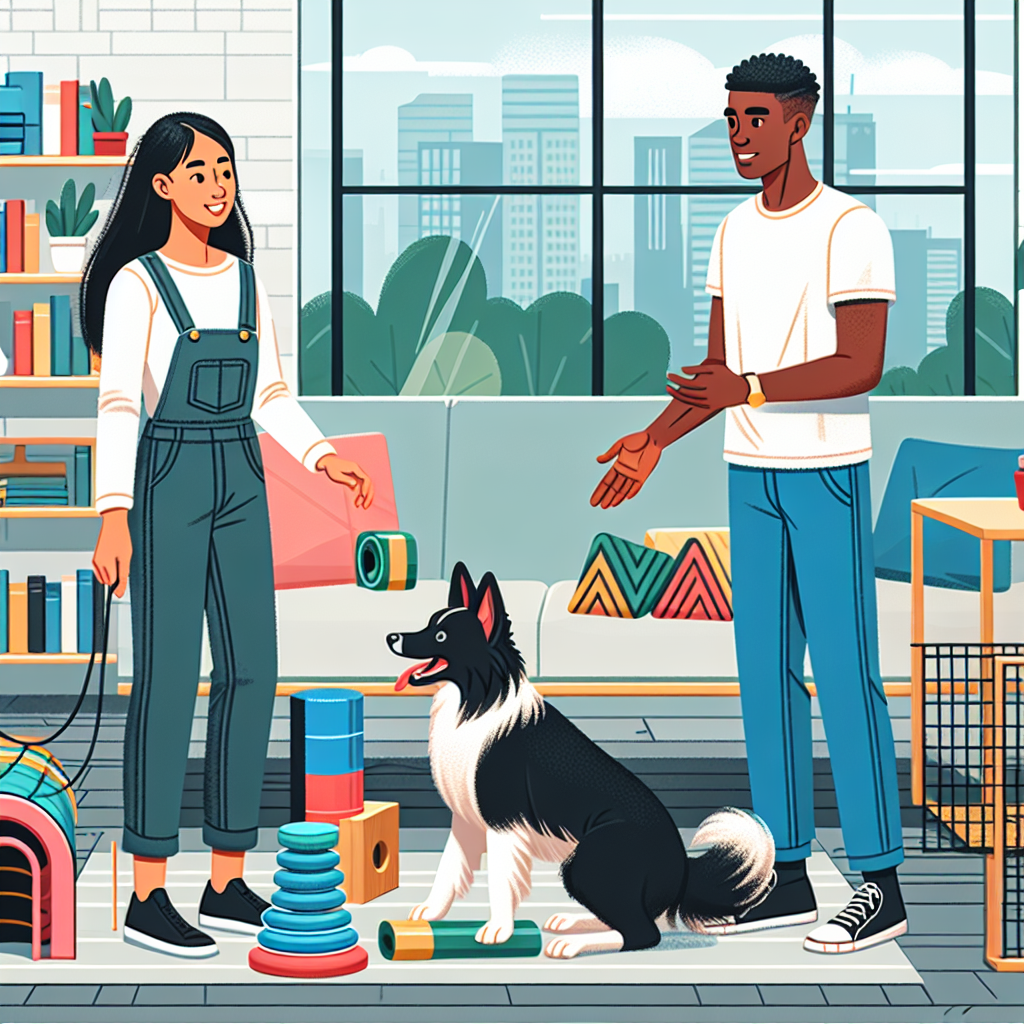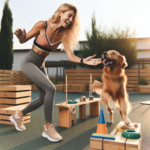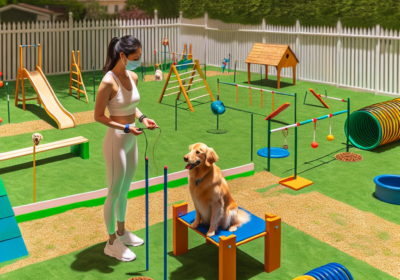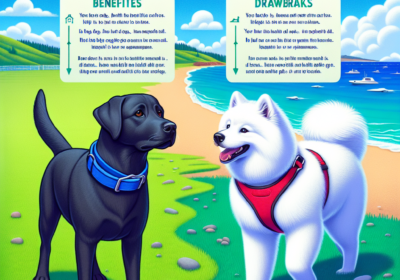Building Trust and Communication with Canine Freework
Table of Contents
- Understanding Canine Body Language: Key to Building Trust
- Strengthening the Human-Canine Bond Through Trust-Building Activities
Building trust and communication with canine freework involves engaging dogs in activities that allow them to explore their environment freely and make choices, fostering a sense of security and confidence. This approach emphasizes understanding and respecting the dog’s natural behaviors and preferences, creating a bond based on mutual respect and understanding. By allowing dogs to navigate their surroundings without constant direction, owners can observe and learn about their dog’s individual needs and communication styles, leading to a deeper, more trusting relationship. This method not only enhances the dog’s well-being but also strengthens the human-canine connection through positive, stress-free interactions.
Benefits Of Canine Freework For Rescue Dogs
Incorporating Canine Freework in Training for Rescue Dogs
Canine Freework, a relatively novel approach in the realm of dog training, has been gaining traction for its numerous benefits, particularly for rescue dogs. This method, which emphasizes allowing dogs to explore their environment freely and engage in natural behaviors, offers a multitude of advantages that can significantly enhance the rehabilitation and training process for rescue dogs. By understanding the benefits of Canine Freework, trainers and adopters can better support the unique needs of these animals, ultimately fostering their well-being and facilitating smoother transitions into new homes.
One of the primary benefits of Canine Freework is its ability to reduce stress and anxiety in rescue dogs. Many rescue dogs come from backgrounds of neglect, abuse, or abandonment, which can leave them with heightened levels of stress and anxiety. Traditional training methods, which often involve structured commands and expectations, can sometimes exacerbate these feelings. In contrast, Canine Freework allows dogs to engage in self-directed activities, such as sniffing, exploring, and foraging, which can be inherently calming. This freedom to choose their actions helps to lower cortisol levels, the hormone associated with stress, thereby promoting a sense of security and relaxation.
Moreover, Canine Freework can significantly enhance a rescue dog’s confidence. Dogs that have experienced trauma or instability may exhibit signs of fearfulness or lack of confidence in new environments or situations. By providing opportunities for these dogs to make choices and solve problems on their own, Canine Freework encourages them to develop a sense of autonomy and self-assurance. For instance, when a dog is allowed to navigate an obstacle course or explore a new area at their own pace, they learn to trust their instincts and abilities. This boost in confidence can be instrumental in helping rescue dogs adapt to new homes and form positive relationships with their adopters.
In addition to reducing stress and building confidence, Canine Freework also promotes physical and mental stimulation. Rescue dogs often have pent-up energy and may exhibit behavioral issues such as excessive barking, chewing, or digging as a result. Engaging in Freework activities provides an outlet for this energy, allowing dogs to channel it into productive and enriching behaviors. The physical exercise involved in exploring and foraging helps to keep dogs fit and healthy, while the mental stimulation from problem-solving and decision-making exercises their cognitive abilities. This holistic approach to stimulation can lead to more balanced and well-adjusted dogs.
Furthermore, Canine Freework fosters a stronger bond between the dog and their handler. Traditional training methods can sometimes create a dynamic where the dog is simply following commands without truly engaging with their handler. In contrast, Freework encourages a more collaborative relationship, where the handler observes and supports the dog’s natural behaviors. This mutual respect and understanding can lead to a deeper connection and trust between the dog and their handler, which is particularly important for rescue dogs who may have experienced broken bonds in the past.
In conclusion, the incorporation of Canine Freework in the training of rescue dogs offers a multitude of benefits that can greatly enhance their rehabilitation and overall well-being. By reducing stress and anxiety, building confidence, providing physical and mental stimulation, and fostering stronger bonds with handlers, Canine Freework addresses the unique needs of rescue dogs in a compassionate and effective manner. As this approach continues to gain recognition, it holds the potential to transform the lives of countless rescue dogs, helping them to thrive in their new homes and lead happier, healthier lives.
Understanding Canine Body Language: Key to Building Trust

Understanding canine body language is fundamental to building trust and effective communication with our four-legged companions. Canine Freework, a method that emphasizes observing and interpreting a dog’s natural behaviors, offers a unique approach to fostering a deeper connection between humans and dogs. By focusing on the subtleties of canine body language, we can create an environment where trust flourishes and communication becomes more intuitive.
To begin with, it is essential to recognize that dogs communicate primarily through body language. Unlike humans, who rely heavily on verbal communication, dogs use a combination of physical cues, such as posture, facial expressions, and tail movements, to convey their feelings and intentions. By paying close attention to these signals, we can gain valuable insights into a dog’s emotional state and respond appropriately. For instance, a wagging tail does not always indicate happiness; the speed, height, and direction of the wag can reveal a range of emotions from excitement to anxiety.
Canine Freework encourages handlers to observe their dogs in a variety of settings, allowing them to express themselves freely without the constraints of traditional training methods. This approach not only helps in understanding the dog’s natural behaviors but also builds a foundation of trust. When dogs feel that their signals are being acknowledged and respected, they are more likely to engage positively with their handlers. This mutual respect is crucial for establishing a strong bond and effective communication.
Moreover, Canine Freework emphasizes the importance of creating a safe and stress-free environment for dogs. Stress can significantly impact a dog’s behavior and ability to communicate effectively. By minimizing stressors and providing a calm and supportive atmosphere, we can help dogs feel more secure and confident. This, in turn, enhances their ability to express themselves clearly and accurately. For example, a dog that feels threatened or anxious may exhibit signs of stress such as panting, yawning, or avoiding eye contact. Recognizing these signs and addressing the underlying causes can prevent misunderstandings and build a stronger sense of trust.
In addition to observing body language, Canine Freework also involves interpreting the context in which behaviors occur. Understanding the context is vital for accurately assessing a dog’s intentions and emotions. For instance, a dog that growls while playing may not be displaying aggression but rather engaging in normal play behavior. By considering the surrounding circumstances and the dog’s overall demeanor, we can make more informed judgments about their actions and respond in a way that reinforces trust and communication.
Furthermore, Canine Freework promotes the use of positive reinforcement to encourage desired behaviors. Positive reinforcement, such as treats, praise, or play, helps to strengthen the bond between handler and dog by rewarding behaviors that align with effective communication and trust-building. This approach not only motivates dogs to repeat these behaviors but also fosters a positive and cooperative relationship.
In conclusion, understanding canine body language is a key component of building trust and communication with dogs. Canine Freework offers a valuable framework for observing and interpreting these signals, creating an environment where dogs feel safe and understood. By paying attention to the nuances of canine body language, considering the context of behaviors, and using positive reinforcement, we can develop a deeper connection with our canine companions. This, in turn, leads to a more harmonious and fulfilling relationship, characterized by mutual trust and effective communication.
Strengthening Trust Through Canine Freework
Canine freework, an innovative approach to dog training, has garnered attention for its numerous benefits, particularly in strengthening the human-canine bond. This method emphasizes allowing dogs to explore their environment freely, engage in natural behaviors, and make choices without constant human direction. By fostering an atmosphere of mutual respect and understanding, canine freework can significantly enhance the trust between dogs and their owners.
One of the primary ways canine freework strengthens trust is by promoting a sense of autonomy in dogs. When dogs are given the freedom to explore and make decisions, they develop confidence in their abilities. This confidence, in turn, translates to a more secure and trusting relationship with their human counterparts. Owners who practice canine freework often observe that their dogs become more relaxed and less anxious, as they are not constantly subjected to commands and restrictions. This reduction in stress levels contributes to a more harmonious and trusting bond.
Moreover, canine freework encourages owners to become more attuned to their dogs’ body language and signals. By observing their dogs in a more natural state, owners can better understand their needs, preferences, and emotions. This heightened awareness fosters a deeper connection, as owners learn to respond more appropriately to their dogs’ cues. Consequently, dogs feel more understood and valued, which reinforces their trust in their owners.
In addition to enhancing trust, canine freework also promotes positive reinforcement, a key component in building a strong human-canine bond. When dogs are allowed to engage in behaviors they find rewarding, such as sniffing, exploring, and playing, they associate these positive experiences with their owners. This association strengthens the bond, as dogs come to view their owners as sources of enjoyment and fulfillment. Furthermore, positive reinforcement techniques used in conjunction with freework, such as praise and treats, further solidify this connection.
Another significant aspect of canine freework is its ability to improve communication between dogs and their owners. Traditional training methods often rely on commands and corrections, which can sometimes lead to misunderstandings and frustration. In contrast, freework encourages a more collaborative approach, where owners and dogs work together to navigate their environment. This collaborative effort enhances mutual understanding and respect, as both parties learn to communicate more effectively. As a result, the bond between dogs and their owners becomes stronger and more resilient.
Additionally, canine freework can be particularly beneficial for dogs with behavioral issues or those who have experienced trauma. By providing a safe and supportive environment for these dogs to explore and express themselves, freework can help them build trust and confidence. Owners who engage in freework with their dogs often report significant improvements in their dogs’ behavior and overall well-being. This positive change further strengthens the bond, as owners and dogs work together to overcome challenges and build a foundation of trust.
In conclusion, canine freework offers a multitude of benefits that contribute to strengthening the human-canine bond. By promoting autonomy, enhancing communication, and fostering positive reinforcement, freework creates an environment where trust and mutual respect can flourish. As owners become more attuned to their dogs’ needs and emotions, they can build deeper, more meaningful connections with their canine companions. Ultimately, the practice of canine freework not only improves the well-being of dogs but also enriches the lives of their owners, leading to a more harmonious and fulfilling relationship.
Effective Communication Techniques in Canine Freework
Incorporating Canine Freework in Training for Rescue Dogs
Effective communication techniques are paramount when incorporating canine freework into the training regimen for rescue dogs. Canine freework, a method that emphasizes the dog’s autonomy and natural behaviors, can significantly enhance the training process, particularly for rescue dogs who may have experienced trauma or inconsistent training in the past. By fostering an environment where the dog feels safe and understood, trainers can build a foundation of trust and cooperation, which is essential for successful rehabilitation and training.
One of the primary communication techniques in canine freework is the use of body language. Dogs are highly attuned to human body language, often more so than verbal commands. Trainers must be conscious of their posture, movements, and facial expressions, as these non-verbal cues can convey a wealth of information to the dog. For instance, a relaxed and open posture can signal to the dog that the environment is safe, encouraging them to explore and engage in freework activities. Conversely, tense or abrupt movements can cause anxiety or confusion, hindering the training process.
In addition to body language, the use of positive reinforcement is a critical component of effective communication in canine freework. Positive reinforcement involves rewarding desired behaviors with treats, praise, or play, thereby encouraging the dog to repeat those behaviors. This technique is particularly beneficial for rescue dogs, who may have had negative experiences with punishment-based training methods. By consistently rewarding positive behaviors, trainers can help rescue dogs build confidence and develop a positive association with training sessions.
Another essential communication technique is the use of clear and consistent signals. Rescue dogs often come from backgrounds where they have received mixed messages or inconsistent training, leading to confusion and anxiety. By using clear and consistent signals, trainers can provide a stable and predictable environment for the dog. This might involve using specific hand signals or verbal cues for different commands and ensuring that all handlers use the same signals. Consistency helps the dog understand what is expected of them and reduces the likelihood of miscommunication.
Moreover, it is crucial to allow the dog to set the pace of the training sessions. Rescue dogs may have varying levels of comfort and readiness to engage in freework activities. By observing the dog’s body language and behavior, trainers can gauge their comfort level and adjust the training accordingly. For example, if a dog appears hesitant or stressed, it may be beneficial to take a step back and allow them more time to acclimate to the environment. This approach not only respects the dog’s individual needs but also fosters a sense of agency and control, which is vital for building trust.
Furthermore, incorporating play into training sessions can enhance communication and strengthen the bond between the dog and the trainer. Play is a natural behavior for dogs and can serve as a powerful tool for building positive associations with training. Engaging in play allows the dog to express themselves freely and can provide valuable insights into their personality and preferences. This information can then be used to tailor the training approach to better suit the individual dog’s needs.
In conclusion, effective communication techniques are essential when incorporating canine freework into the training of rescue dogs. By utilizing body language, positive reinforcement, clear and consistent signals, allowing the dog to set the pace, and incorporating play, trainers can create a supportive and understanding environment. This approach not only facilitates successful training outcomes but also helps rescue dogs build confidence, trust, and a positive relationship with their handlers.
Strengthening the Human-Canine Bond Through Trust-Building Activities
Building trust and communication with canine freework is an innovative approach to strengthening the human-canine bond through trust-building activities. This method emphasizes the importance of understanding and respecting a dog’s natural behaviors and instincts, thereby fostering a deeper connection between the dog and its owner. By engaging in canine freework, owners can create an environment where their dogs feel safe, understood, and valued, which is essential for developing mutual trust and effective communication.
Canine freework involves allowing dogs to explore their surroundings at their own pace, without the constraints of traditional training methods. This approach encourages dogs to use their senses and instincts to navigate their environment, which can lead to increased confidence and reduced anxiety. By observing their dogs during freework sessions, owners can gain valuable insights into their dogs’ preferences, strengths, and areas of discomfort. This knowledge can then be used to tailor training and enrichment activities to better suit the individual needs of each dog.
One of the key benefits of canine freework is that it promotes a sense of autonomy and choice for the dog. When dogs are given the freedom to make decisions and explore their environment, they are more likely to feel in control and less stressed. This can lead to a more relaxed and cooperative dog, which in turn makes it easier for owners to build trust and establish effective communication. Additionally, by allowing dogs to engage in natural behaviors such as sniffing, digging, and foraging, owners can help fulfill their dogs’ innate needs and provide mental stimulation, which is crucial for overall well-being.
To implement canine freework effectively, it is important for owners to create a safe and enriching environment for their dogs. This can be achieved by providing a variety of sensory experiences, such as different textures, scents, and objects for the dog to explore. Owners should also be mindful of their dogs’ body language and signals, as these can provide important clues about how the dog is feeling and what it needs. By being attentive and responsive to their dogs’ cues, owners can build a foundation of trust and mutual understanding.
Furthermore, canine freework can be an excellent way to address behavioral issues and improve overall behavior. For example, dogs that are fearful or reactive may benefit from the confidence-building aspects of freework, as it allows them to explore and interact with their environment in a controlled and positive manner. Over time, this can help reduce fear and reactivity, leading to a more balanced and well-adjusted dog. Similarly, dogs with high energy levels or those prone to boredom can benefit from the mental and physical stimulation provided by freework, which can help prevent destructive behaviors and promote a more harmonious household.
In conclusion, building trust and communication with canine freework is a powerful tool for strengthening the human-canine bond through trust-building activities. By allowing dogs to explore their environment and engage in natural behaviors, owners can create a sense of autonomy and choice for their dogs, leading to increased confidence and reduced anxiety. This approach not only helps fulfill dogs’ innate needs but also provides valuable insights into their preferences and behaviors, enabling owners to tailor training and enrichment activities more effectively. Ultimately, canine freework fosters a deeper connection between dogs and their owners, promoting mutual trust, understanding, and effective communication.
Read more about Canine Freework
Canine Freework and Bonding with Your Dog
– Building Trust and Communication with Canine Freework
– Positive Effects of Canine Freework on the Human-Canine Bond
– Incorporating Canine Freework in Training for Rescue Dogs
– Canine Freework for Dogs with Behavioral Issues
– Creating a Stronger Connection with Your Dog through Canine Freework







![The Dog Podcast Uncovers Startling Truths About What We Feed Our Dogs [Press Release]](https://yourhomeandgardenhub.com.au/wp-content/uploads/2024/08/dog-bowl-400x280.webp)


